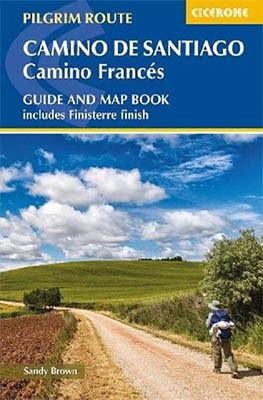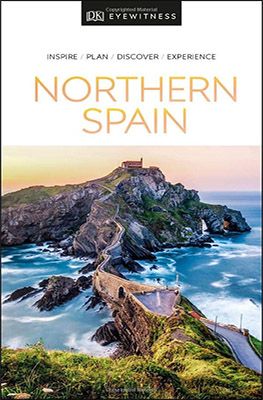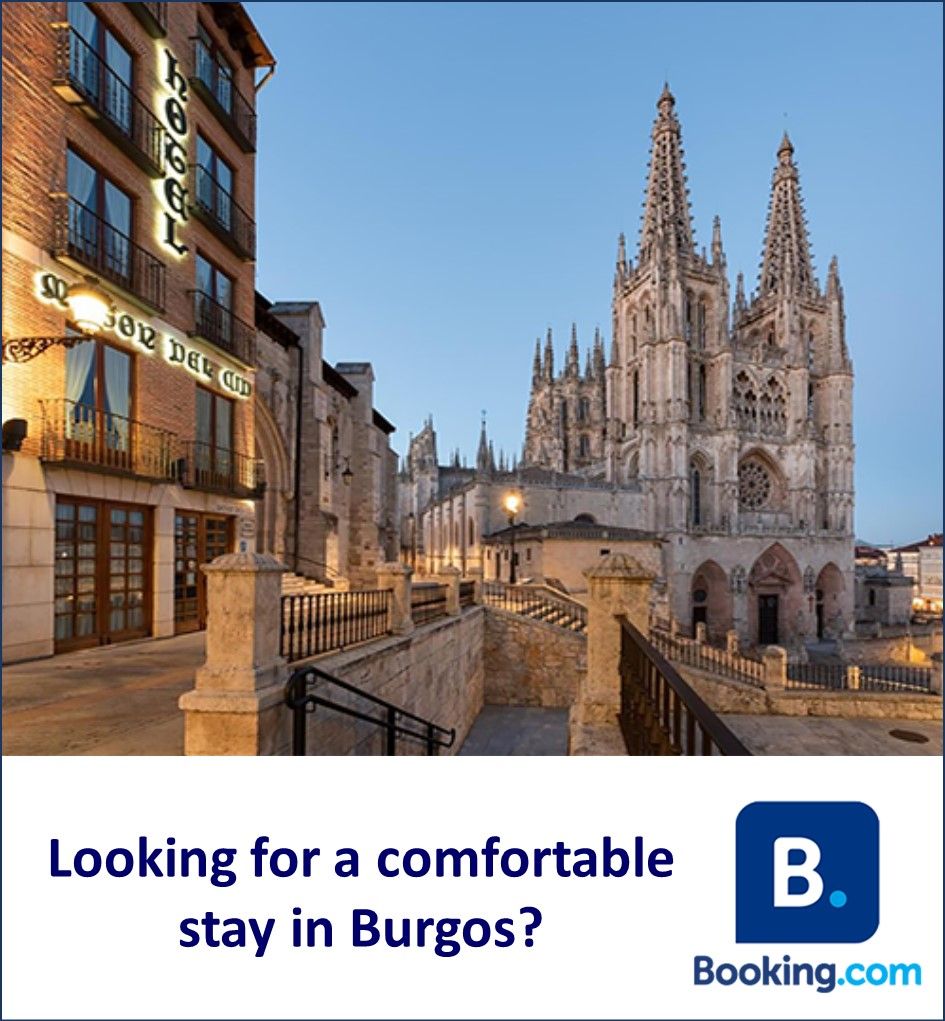On the river Arlanzón lies the beautiful city of Burgos. It is the capital of the province of the same name in the Spanish autonomous region of Castilla y León. Burgos has been an important stopover for pilgrims on their way to Santiago de Compostela for centuries. The city has a beautiful medieval centre with several sights to see. Of these, Santa Maria Cathedral is the biggest attraction. But Burgos has much more to offer. It is a surprising city and a wonderful destination for a city break. We’ll guide you through some highlights of Burgos.
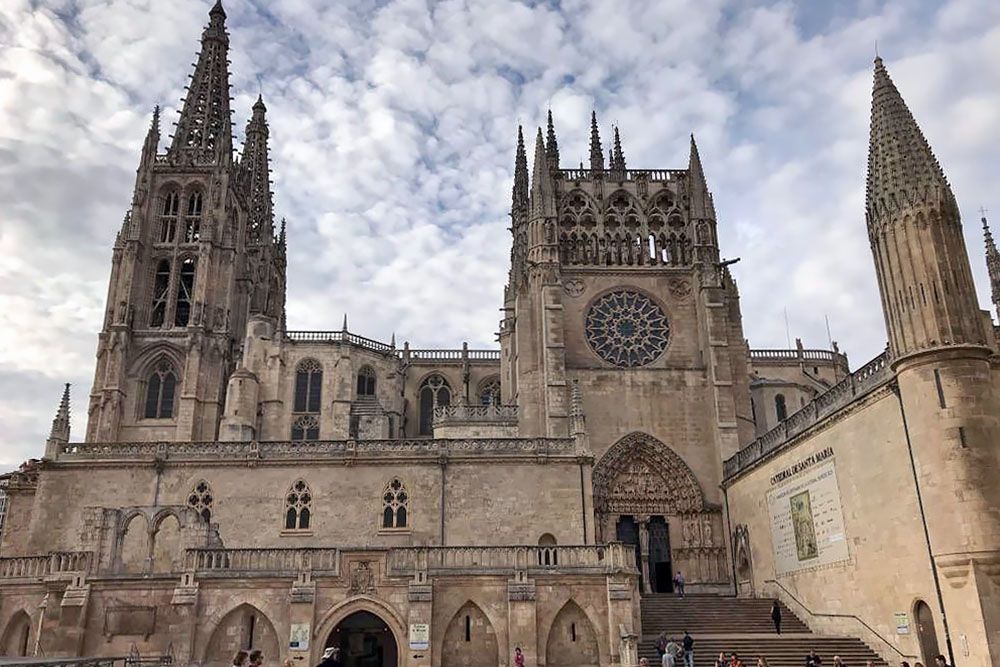
History of Burgos
During the reign of King Alfonso the Great of León, the city was founded in 882. In the 10th and 11th centuries, Burgos was the capital of Old Castile. This period also saw the birth of Rodrigo Diaz de Vivar. As “El Cid”, he became a national hero (see below for more information on El Cid). In 1200, the first bridge across the river Arlanzón was built. This allowed the many pilgrims on their way to Santiago de Compostela to easily walk into the city. After all, the imposing cathedral and convent were important pilgrimage sites for these pilgrims.
Due to its favourable location on the Camino and its exclusive right to trade merino wool, Burgos experienced a great boom in the Middle Ages. The city changed from a small village to an important centre for trade. Magnificent buildings sprang up in Burgos. Centuries later, during the Napoleonic era, the city suffered a lot of damage. In 1936, Franco formed his provisional government in Burgos.
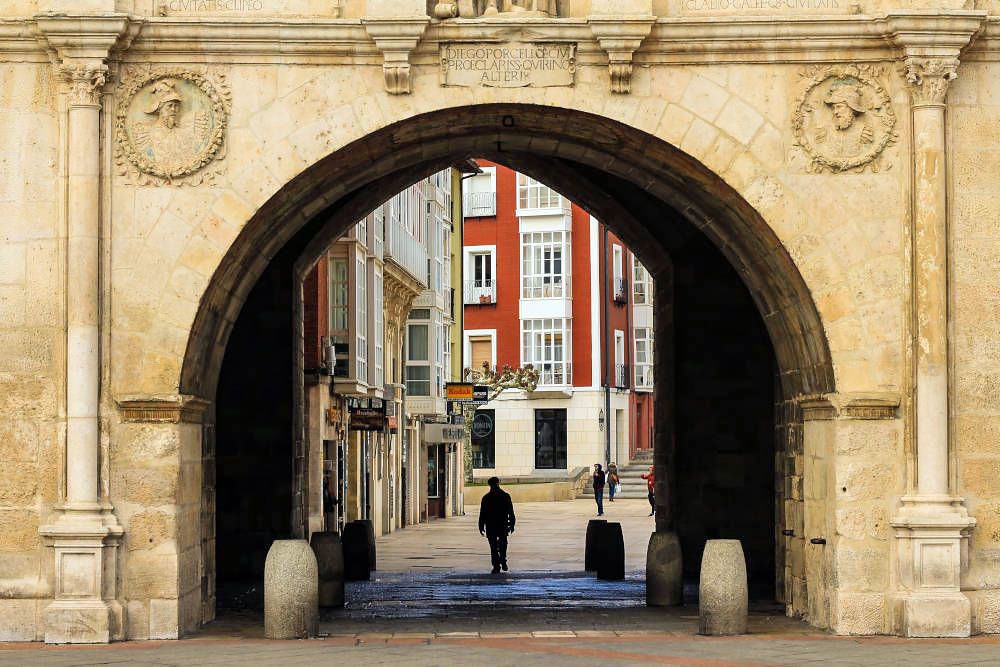
National hero El Cid
If you are in Burgos, El Cid’s name pops up everywhere. That is why we’ll take a moment to remember the knight who became a national folk hero. He was born in a village near Burgos under the name Rodrigo Díaz de Vivar. As an adult, he became a knight and warlord. He fought with and against both Christian and Muslim armies. He seemed invincible, mainly because he was strong in psychological warfare and bluffing. After one of his victories, he received an Arab decoration called al-sid. Later, as El Cid, that became his nickname. The Spanish also distinguished El Cid with the title El Campeador, meaning brave.
After besieging and defeating Valencia, he ruled that city for five years. After his death in 1099, his wife inherited the city. After his death, El Cid became a national hero. He is the main character in the most important medieval Spanish poem El Cantar de mio Cid. In the 16th century, King Philip II made attempts to canonise him. But the Pope did not honour that request. El Cid’s recalcitrant attitude against authority and his bloody fight against the Islamists were the reason. After his death, his body was buried 14 times in different places. Finally, he found his final resting place in Burgos Cathedral.
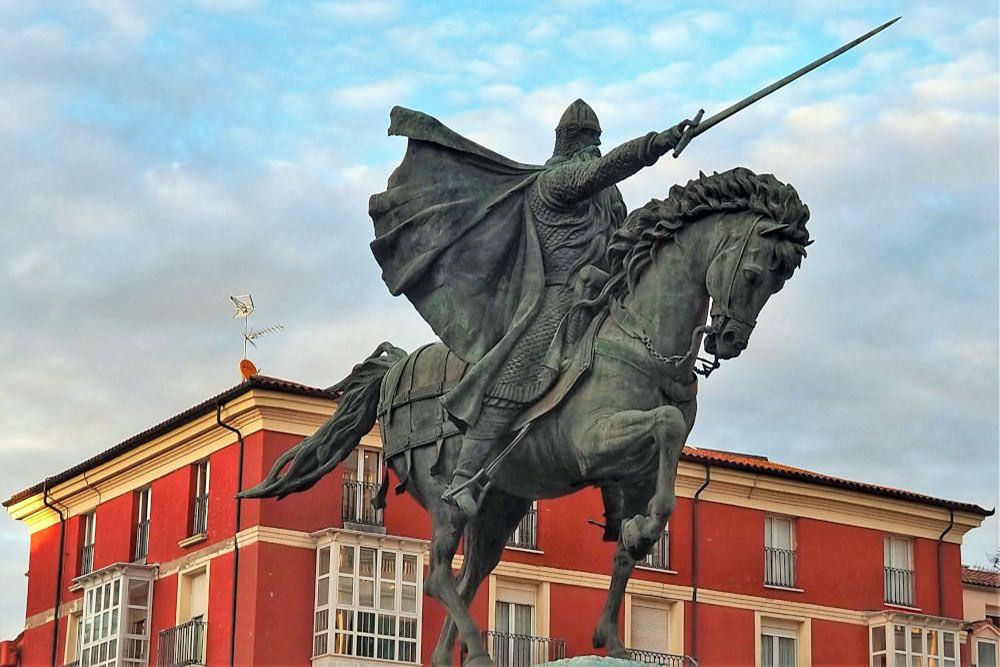
Highlights of Burgos
The city has a beautiful medieval and car-free centre. Strolling through the city streets, you will come across several sights. The following are the highlights of Burgos:
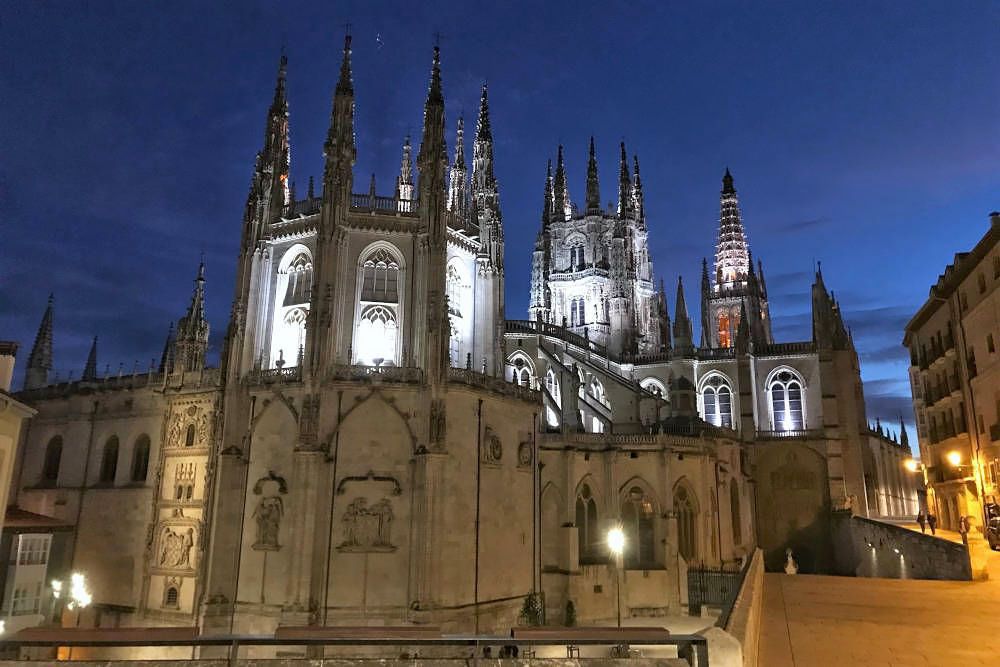
Cathedral de Santa Maria de Burgos
This cathedral is rightly the biggest attraction in Burgos. It the not the only cathedral in Spain on UNESCO’s World Heritage List for nothing. Construction of the Gothic church began in 1221. Finally, the cathedral was completed in 1567. The church is shaped like a Latin cross and is huge. Numerous famous artists and architects from Europe collaborated on its construction. The result is a magnificent feat of Gothic architecture. Must-sees in the cathedral are the Golden Staircase, the central dome, the many beautiful chapels (the Condestable chapel is especially beautiful), the tomb of El Cid and his wife, and the choir stalls.
A ticket to visit costs €11 and also gives access to the cloister and museum. An English-language audio tour is available. Allow plenty of time for a visit to the cathedral. Two hours is actually too little to take in all the splendour. There is a good reason why the cathedral is one of the main attractions in Burgos!
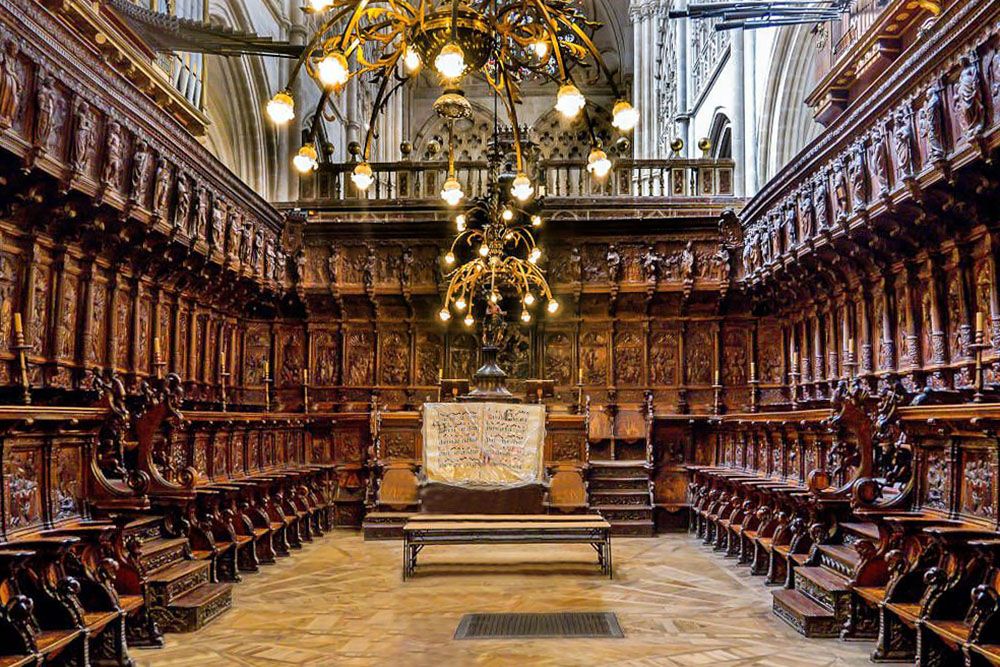
Monasterio de Santa María de Las Huelgas
Slightly outside the historic city centre, across the river, lies this impressive monastery. This is the home of Cistercian nuns. The monastery was founded in 1187 by King Alfonso VIII. Entry was only possible for respected nuns of standing. The convent served as a wedding venue for many kings and relatives. That also explains its opulent interior. Of special note is the museum with clothes from the convent’s various royal tombs. Inside the monastery is a wooden statue of Saint James holding a sword. Crown princes would have been knighted at Santiago with this. But the highlight is the beautiful cloister of San Fernando.
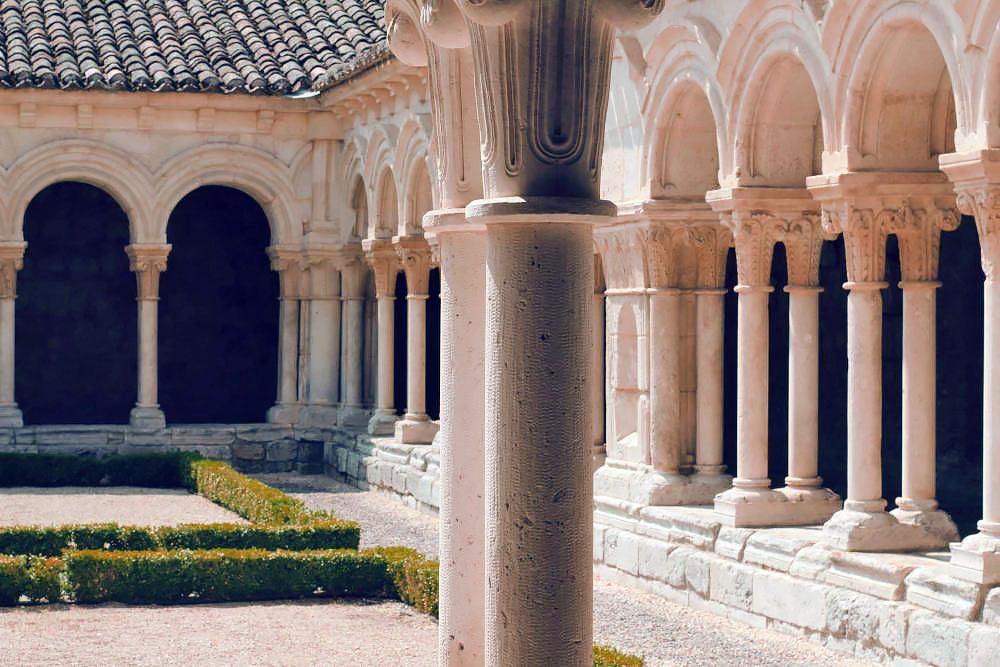
Arco de Santa Maria
This is the main gateway to the historic city centre. The white gate was converted into a triumphal arch by Charles V in the 16th century. He did so in gratitude for the support the city gave him when fighting insurgents. The arch depicts the most important figures in the history of Burgos. Of course, it features Charles V himself but also the founder of Burgos, and of course the knight El Cid. The upper room of the city gate regularly hosts art exhibitions. You can visit those for free. Nice to see and, in addition, enjoy the view of the river and the promenade next to it.
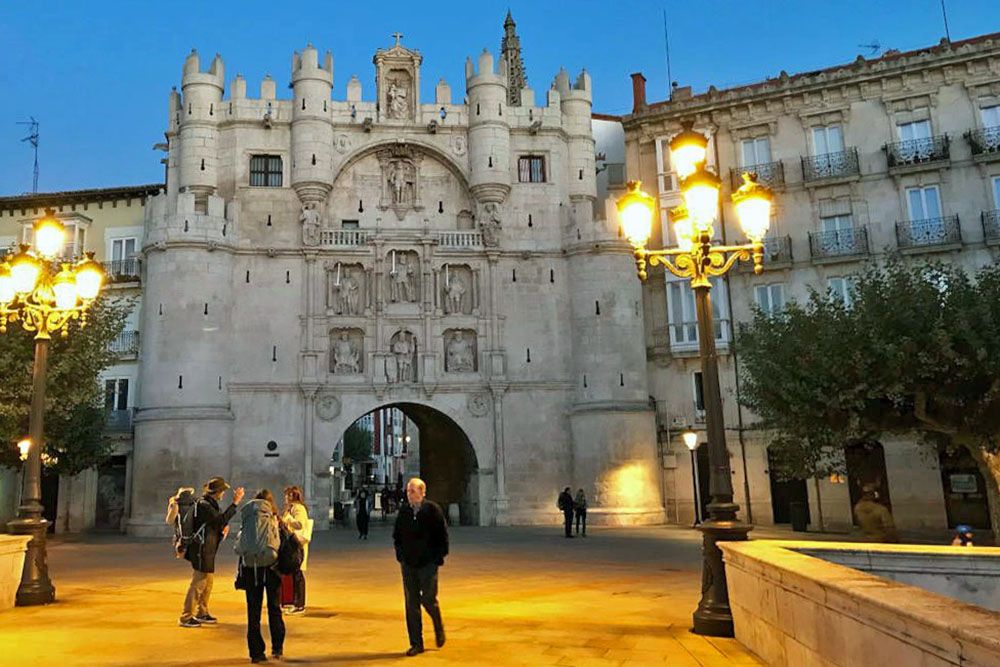
Plaza Mayor
This is the city’s central square. You would expect the cathedral to be located at this square too, but it is not. It is located just a little to the west on the smaller Plaza Santa Maria square. But that doesn’t make Plaza Mayor any less interesting. Surrounding the square are beautiful buildings. One of them is the city hall from 1791. The statue of Carlos III is here in the square. At the end of the working day, the many terraces in Plaza Mayor fill up. Locals feast on a glass of wine and some pintxos. You will also find nice shops in Plaza Mayor.
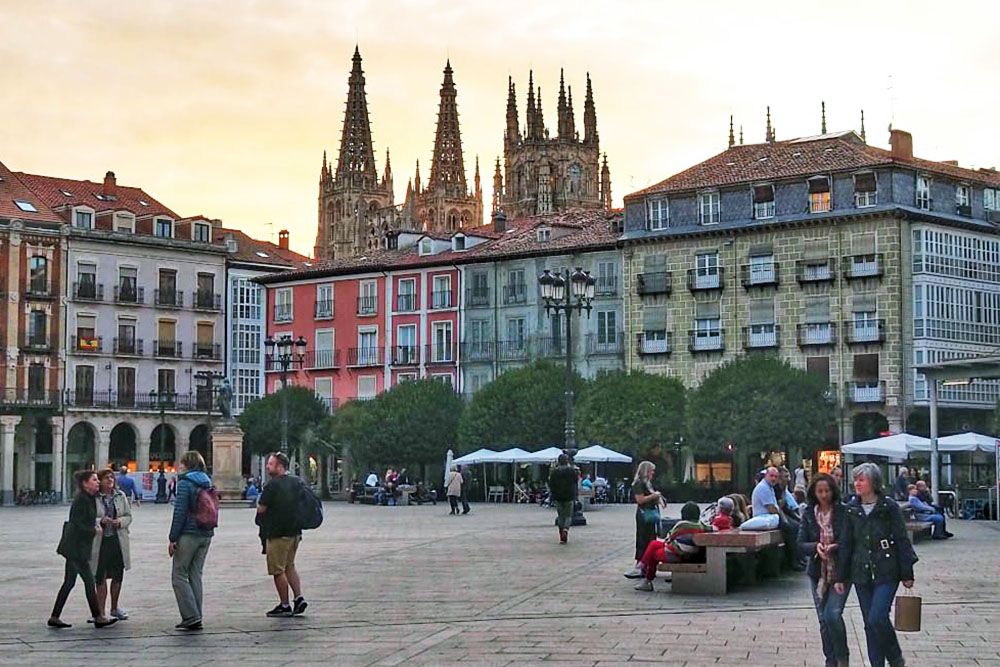
Paseo del Espolón
Along the banks of the river Arlanzon, under the shade of the many plane trees, lies this promenade. Burgos residents like to take a stroll there along the river and its park-like surroundings. On the city side, the promenade is completely filled with restaurants, cafés and terraces. A lovely place to enjoy pintxos and a drink. The promenade runs from the city gate Arco de Santa Maria to the Puente de San Pablo. If you turn left there, you walk straight into the big statue of El Cid. Incidentally, you can stroll further along the river. But this is the most beautiful and the nicest part.
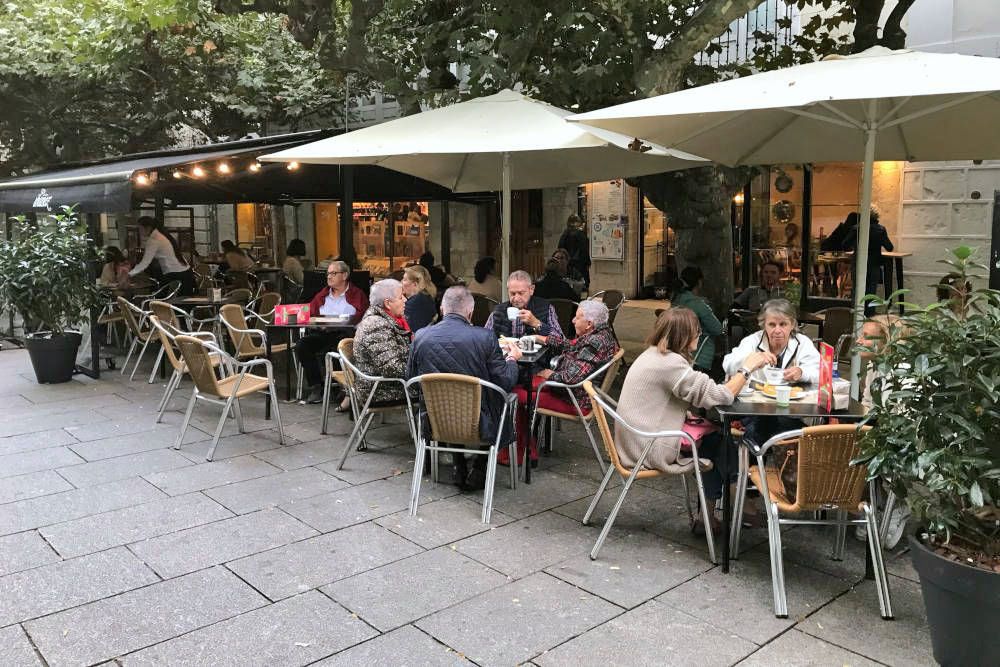
Castillo de Burgos
Count Diego Rodríguez Porcelos is the founder of Burgos. To protect the city and its people, he ordered a castle to be built on the hill near the city. Several kings strengthened and enlarged the castle over the centuries. In 1813, French troops almost completely destroyed the castle. Now you only see ruins as remnants. With a guide, the underground passages can be visited. Furthermore, the area around the castle is a recreational area. But the most important reason to visit the castle is the great view of the city. Especially at sunset, many visitors come there. They enjoy the setting sun and the beautifully lit cathedral. A wonderful point to take great photos.
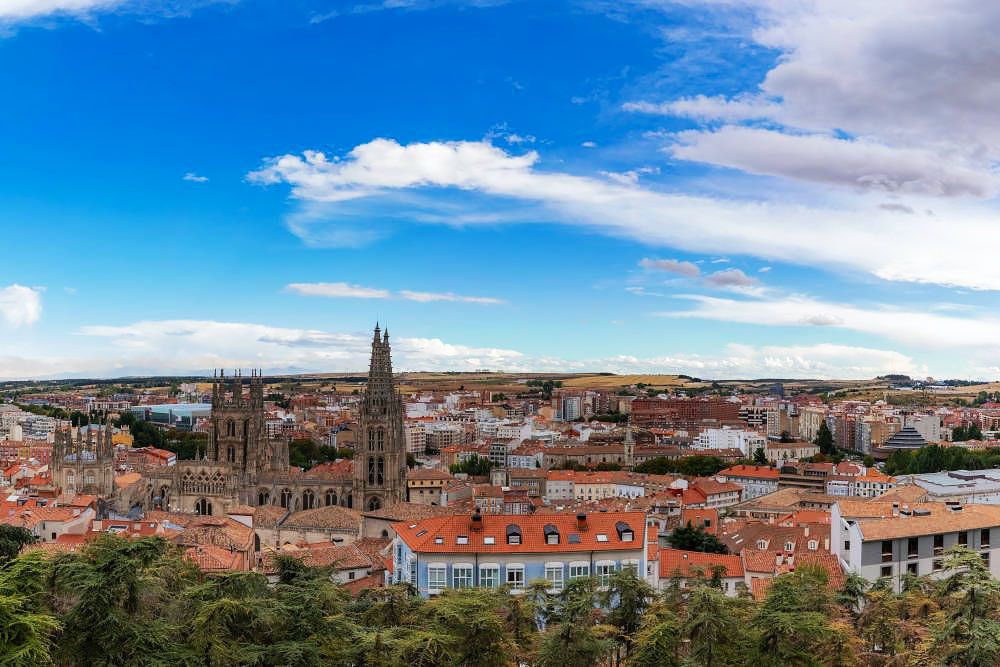
Museo de la Evolución Humana
Around Burgos, important ancient human fossils have been unearthed in the Sierra de Atapuerca. This led to the creation of the Museo de la Evolución Humana. It is the place to learn more about human evolution and Darwin’s theory of evolution. The museum is housed in a state-of-the-art building that contrasts beautifully with the fossils of our ancestors.
Museo de Burgos
Another special museum is Museo de Burgos. It is housed in a magnificent Renaissance palace, Casa de Miranda. For that building alone, the museum is worth a visit. The collection consists of objects from the region of Burgos. The museum has two departments. The Prehistory and Archaeology department offers an overview of archaeological finds from Prehistory to the 8th century. The Fine Arts Department has an extensive collection of fine art from the 8th century to the present.
Iglesia de San Nicolas de Bari
This small church from the 15th century literally stands in the shadow of the imposing cathedral. On the way to the viewpoint near the castle, you pass this shrine. Be sure to take a look inside. The showpiece of the church is one of the most monumental altarpieces of Castilian Renaissance art. Simón de Colonia and his son Francisco de Colonia are the creators of the altarpiece. It is made of limestone and has a large size. This makes this altarpiece a unique monument.
Cartuja de Miraflores
A little outside the city centre, about 4 kilometres east of the main city gate, lies this extraordinary Carthusian monastery. The origins of La Cartuja de Miraflores date back to the year 1442. King Juan II of Castilla donated a palace to the Carthusian monks so that they could use it as their monastery. King Juan II and his wife, Queen Isabella are buried in the monastery. The austere cloisters and the unusual chapel with Flemish art are the highlights of this religious centre.
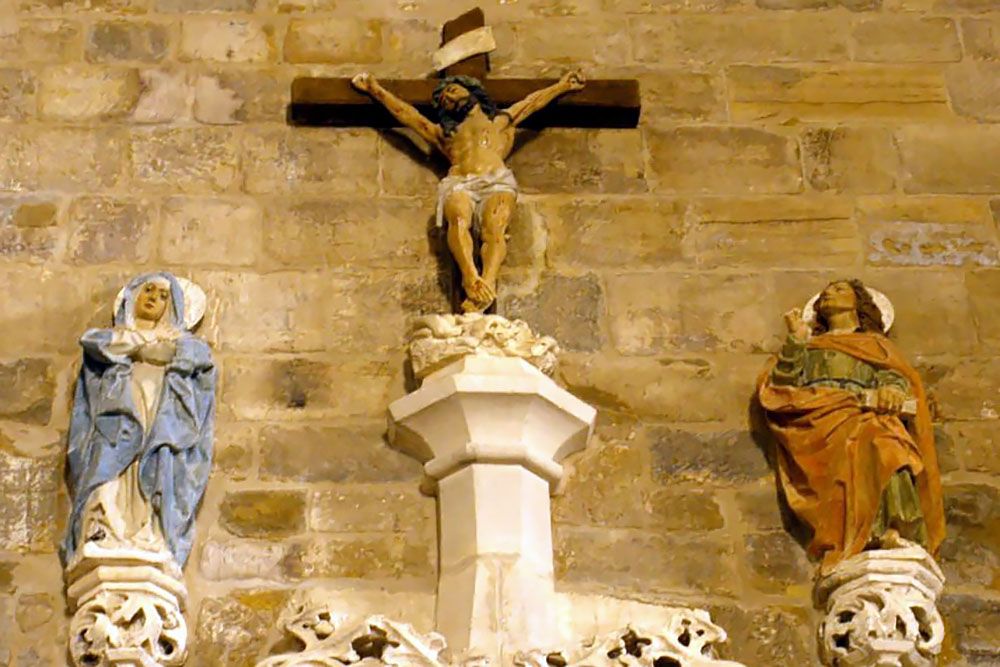
Highlights in the Burgos area
If you are on holiday in the Castilla y León region with your own car, visit some of the highlights around Burgos. Interesting ones include:
Lerma
Just under 40 kilometres south of Burgos is the town of Lerma. From the motorway, the town already stands out clearly, on top of the hill by the river Arlanza. It is a charming and small town with plenty of beautiful buildings. The ducal palace from the 17th century is especially beautiful. You can now spend a lovely night there, as it has become a stylish hotel. Next to this palace is a Dominican nunnery. Furthermore, Lerma has a number of unusual churches and monasteries. It is therefore a nice city to visit in a few hours.
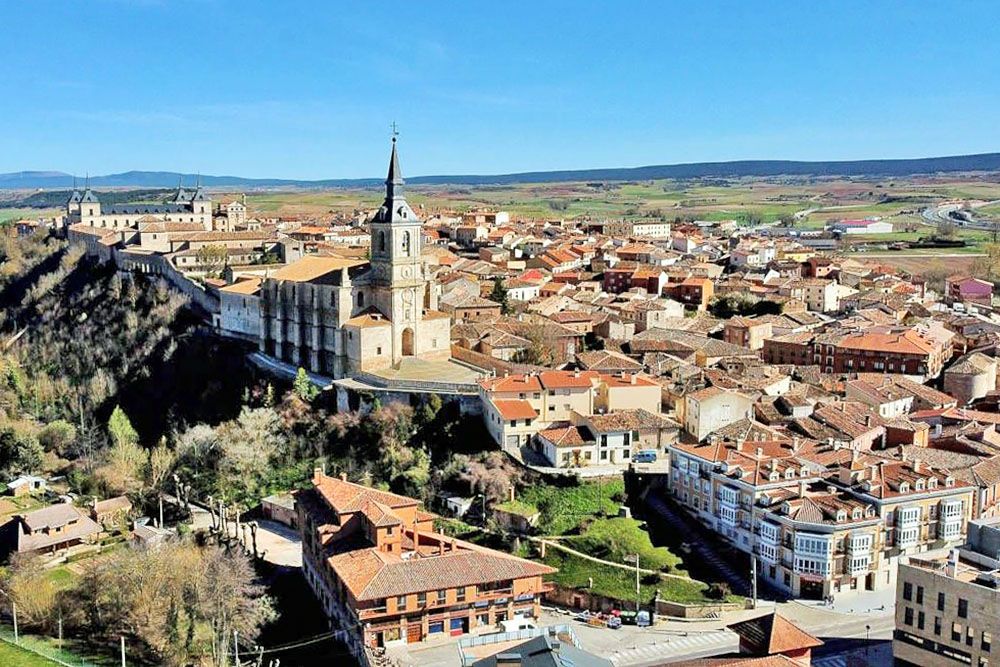
Santo Domingo de Silos
About 60 kilometres south of Burgos lies the pilgrimage town of Santo Domingo de Silos. It is a small hamlet with just a few hundred inhabitants. The absolute highlight of the place is the Abbey of Santo Domingo de Silos. It is listed as one of the most beautiful monasteries in the country. Just outside the village is the “‘Sad Hill Cemetery”. This place served as a shooting location for the final scene from the spaghetti western “The good, the bad and the ugly”.
Covarrubias
If you are on your way to Santo Domingo de Silos, you will pass Covarrubias. Then be sure to make a stop in one of Spain’s nicest small towns. What immediately stands out is the characteristic architectural style of the houses: they are built on wooden beams. Special places in the town are the church with bell tower, the old city wall and the city gate. Furthermore, it is fun to stroll through the alleys and occasionally enjoy the cosy squares.
Frequently asked questions about Burgos
Burgos is located in northern Spain. It is the capital of the province of the same name in the Spanish autonomous region of Castilla y León.
- By car, it is over 1,300 kilometres from Calais. A drive that takes around 13 hours without traffic jams.
- By public transport, you can reach Burgos poorly. By train, you have to change trains several times. The last stretch you continue by bus. In doing so, you also have to change buses once.
- Flying to Burgos means travelling via Madrid. There, you transfer to the train or rent a car.
The best time to visit Burgos is in spring or autumn. During the summer months, many Spanish tourists come to the city. Besides, it is also pretty hot during that time.
Burgos is fairly unknown to most tourists. Yet it is a great city to visit because the medieval centre has plenty of sights. It is also a charming city with plenty of nice squares, terraces and pintxos bars, where you eat delicious tapas. The biggest attraction is the beautiful cathedral.
The Catedral Santa Maria la Real is the biggest attraction in Burgos. The splendour inside is unique to Spain. It is the only Spanish cathedral on UNESCO's World Heritage List, that’s how good it is. The medieval centre has plenty of nice streets and squares. Other attractions include the monastery Monasterio de Santa María de Las Huelgas, the main square Plaza Mayor and the city gate Arco de Santa Maria.
Pinxtos are not only a speciality in the Basque country. In Burgos too, you will come across many pintxos bars in the old town with delicious snacks. Vermuteria Victoria is one of the best places to enjoy pintxos.
Good restaurants in Burgos include:
- Crisol Mesón del Cid, authentic and stylish hotel right in the centre. Ask for a room at the front. Then you'll have a great view of the cathedral.
- Appartement Contemplando la Catedral. A tastefully decorated flat in the heart of the city.
- Silken Gran Teatro. Stylish and modern hotel near the Museum of Human Evolution. A five-minute walk from the historic city centre.
- Pension Boutique Doña Urraca. In a charming district with many bars and eateries, this excellent guest house with comfortable rooms is located.
This is the complete range of accommodation in Burgos.

